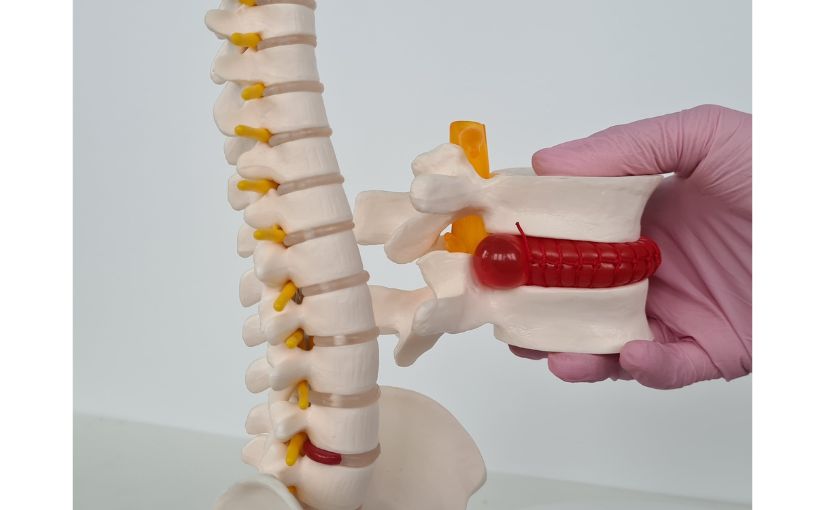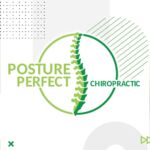
Sleep apnea is a common sleep disorder where you stop breathing during sleep. This can cause loud snoring, headaches and excessive daytime sleepiness. According to the Sleep Foundation these breathing interruptions can ruin your sleep and lead to a number of detrimental conditions.
According to Hopkins Medicine, if left untreated sleep apnea can lead to chronic fatigue, high blood pressure, increased cardiovascular risk and metabolic issues. The good news is that all is not lost if you’re affected by sleep apnea. That’s because chiropractic therapy is a great complementary treatment. Many patients find that sessions with a doctor of chiropractic and techniques like chiropractic massage help to reduce musculoskeletal tension. This helps you sleep better and address sleep apnea symptoms.
Chiropractic Therapy and Sleep Apnea: The Connection
Chiropractic therapy focuses on musculoskeletal disorders especially those affecting the spine. When the spine is out of alignment, or in subluxation, it can affect the nervous system and many bodily functions including breathing. Even misalignments in the jaw as seen with TMJ issues can narrow airway passages and worsen sleep apnea.
Improving Nervous System Function
Improving your nervous system function—breathing, muscle function and all—is what these adjustments are all about. A skilled chiropractor performs them with precision, so your nervous system can do its job of regulating the body’s vital processes smoothly.
Reducing Muscle Tension
Reducing muscle tension in the neck and shoulders can make a big difference in how easily you breathe during sleep. That’s where chiropractic massage comes in—alongside standard adjustments—to help relieve that tension and promote relaxation.
Enhancing Posture
Correcting poor posture, such as tech neck, may reduce compression of the airway passages and alleviate sleep apnea symptoms. Your chiropractor will work with you to develop strategies that promote better posture—and overall musculoskeletal health.
Improving Breathing
When your spine is properly aligned, your respiratory function improves. That means you can breathe more easily, and get the deep, restorative sleep you need. That’s what chiropractic adjustments can do.
Potentially Reducing Stress
Stress reduction is a big part of getting a good night’s sleep. By working with a chiropractor, you can learn to manage stress through the holistic approach they offer. Techniques like chiropractic massage can help you feel more at ease, and that sense of well-being can follow you through the rest of your day.
Benefits of Chiropractic Therapy for Sleep Apnea
Many people have discovered that chiropractic therapy can be a real game-changer for their sleep apnea symptoms and overall well-being. What you get from that—that improved spinal alignment and reduced muscle tension—has a ripple effect on the benefits you see.
Better Sleep Quality
Regular adjustments help relax those tight muscles and let you sleep more soundly, and more restoratively, through the night.
Reduced Snoring
Snoring sufferers often find that targeted adjustments from a skilled doctor of chiropractic can open up those airway passages and make snoring less of a problem. That means fewer sleepless nights for both them and their partners.
Fewer Sleep Apnea Episodes
Fewer sleep apnea episodes can also be a result of a balanced nervous system and improved musculoskeletal function. That means less disruption during sleep and more consistent rest.
Increased Energy Levels
As your sleep quality improves, you’ll often notice you have more energy throughout the day. That’s because your body is able to function at its best. And that’s just the beginning.
Improved Overall Health
The holistic benefits of chiropractic care—coupled with the occasional chiropractic massage—can extend far beyond sleep. They can enhance your overall physical well-being.
Chiropractic treatments for sleep apnea
Chiropractic therapy offers a holistic approach to managing sleep apnea. It uses a blend of treatments to restore proper alignment and reduce muscle tension. A doctor of chiropractic typically administers this comprehensive method. The approach encompasses several key techniques.
Spinal Manipulation
Spinal manipulation is a chiro technique that specifically targets misalignments along the spine in an effort to restore nerve function. This, in turn, promotes smoother breathing patterns. Such a technique plays a crucial role in reducing the severity of sleep apnea episodes. It also ensures that the spine supports overall respiratory health.
Soft Tissue Mobilization
This aims to relieve tension in the muscles and connective tissues surrounding the airway. Consequently, it clears restrictions in the neck and chest. Such a process leads to improved airflow during sleep. Here, occasional chiropractic massage further eases muscle tightness. It also encourages a more relaxed state.
Therapeutic Exercises
These exercises help maintain the benefits of spinal adjustments and soft tissue mobilization, while occasional chiropractic massage further enhances muscle relaxation. Together, these strategies reduce the frequency and intensity of sleep apnea symptoms and enhance overall well-being.
Limitations
- Not a Cure. Treat it as a complementary treatment not a cure for sleep apnea.
- Not Suitable for Everyone. People with severe scoliosis, spinal infections or those who have had recent spinal surgery may not be ideal candidates.
- Limited Scope. People with severe scoliosis, spinal infections or those who have had recent spinal surgery may not be ideal candidates.
Find Your Way to Peaceful Sleep
At Posture Perfect Chiropractic, we know sleep apnea affects more than just your nights; it affects everything about you. Our care combines precise spinal adjustments, targeted soft tissue mobilization and expert chiropractic therapy to clear the way for deep restorative sleep. Contact us today to book your appointment.
Chiropractic adjustments can really make a difference to your respiratory muscles. That’s because they help your body communicate more effectively with those muscles—and ease the tension that can hold them back. When your spine is properly aligned, your respiratory muscles can function at their best.
Improving your posture can certainly help reduce airway compression and make breathing easier. But while that’s a good thing, it’s just one part of a comprehensive treatment plan for sleep apnea. Chiropractic care can support better breathing by enhancing your overall alignment. But to manage sleep apnea effectively, you really do need professional guidance.











